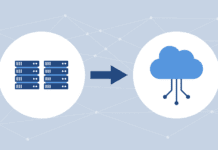When Rick Chin, senior vice president of IT at Pinnacle Financial, went in search of a new e-mail archiving solution in the summer of 2006, he wasn’t thinking about compliance, even though amendments to the Federal Rules of Civil Procedure (FRCP) were set to take effect just a few months later (see Rules About to Change in e-Discovery Game).
Chin and his team were simply in search of a product that would make Pinnacle’s Microsoft Exchange server operate more efficiently. It was only after he met with vendors and spoke with colleagues at other companies that he learned about the potential e-discovery benefits.
“We had learned about some of the potential legal liability out there from companies who were facing e-discovery situations without a solution in place,” he recalled. “And we said, hey, for a relatively minor investment compared to the legal bills that could happen if we didn’t have something in place, we could get something in place and literally save ourselves millions of dollars.”
So on Sept. 30, 2006, two months before the FRCP amendments were to take effect, Pinnacle acquired Mimosa System’s NearPoint for Microsoft Exchange Server, which claims to unify e-mail archiving, recovery and storage management — and help clients comply with FRCP and other regulations on storing, maintaining and retrieving electronically stored information (ESI). Although Chin didn’t know it at the time, he was at the forefront of a trend.
“More and more companies are investing in e-mail archiving as they become aware of the substantial legal risk and cost of missing information,” said Bill Tolson, director of compliance and legal solutions marketing at Mimosa Systems. “Analysts estimate that the average e-discovery event costs $1.5 million, and the number of e-discovery events is on the rise. Companies that fail to execute properly on litigation requests have been fined huge sums of money and have lost their cases, resulting in significant business disruption. This is a preventable situation made possible by a new generation of archiving and e-discovery technologies.”
New Rules, Old Problem
How to store, maintain and retrieve ESI is not a new problem. Just ask any in-house legal counsel, compliance officer or corporate attorney. But with the rise of industry-specific regulations, the amended FRCP, a number of high-profile cases involving ESI (particularly e-mail) and judges’ growing intolerance for companies’ claims that certain ESI is inaccessible or does not exist, companies have been taking e-discovery much more seriously in the year since the FRCP amendments took effect.
“The new rules represent what many in-house counsel have been dealing with for years — the need for better, earlier, more collaborative discovery planning when your potential evidence is found somewhere in hundreds of millions of pieces of data rather than hundreds of boxes of paper,” said Martha Mazzone, a vice president and associate general counsel at Fidelity Investments.
“Planning ahead, knowing where and how data is stored, knowing how to retrieve it, review and produce it accurately in the most cost-effective manner, or how to ask for it if you are on the requesting side — these are all critical parts of discovery procedure for any kind of discovery,” she said.
And while financial institutions like Fidelity have been tackling this problem for years, Mazzone said that “the amended FRCP may have been a catalyst for some law firms and some companies finally to act to improve their knowledge of electronic recordkeeping and retrieval systems.”
“I think previously [companies] regarded e-discovery as an unwanted stepchild in their legal process, not something they really wanted to think about, not something that was viewed as critical,” said Aaref Hilaly, president and CEO of Clearwell Systems. But the amendments to the FRCP guidelines “have put e-discovery on the agenda of corporate America … made it front and center.”
Tolson agreed. “The FRCP was kind of a wake-up call to all those companies who didn’t think they had to worry about [e-discovery and compliance], because they weren’t in a regulated industry.”
A Boon For E-Discovery Vendors
As a result of both the federal and industry rules (in particular, SEC rule 17a-4), companies with e-discovery offerings have been getting a lot more meetings with compliance departments, in-house counsel and teams made up of IT, compliance and outside counsel — and sales.
“We’ve seen a huge increase in our business over the last year,” said Stephen Whetstone, an attorney who heads up client development and strategy at Stratify, an e-discovery solution provider that was recently acquired by Iron Mountain.
“There has been a rapid increase in the sheer volume of electronic data,” said Whetstone. As a result, “there’s been an increased need to use more advanced systems to make sense out of the data, because you cannot click through, page by page, tens or hundreds of gigabytes of data in a way that is sustainable, given the hourly rates that lawyers are charging. So law firms and companies alike have been looking for new ways for getting through data more quickly and also more consistently.”
Solutions like Stratify Legal Discovery 8.0, he said, “decrease cost and risk and increase consistency and efficiencies.”
Today’s e-discovery solutions also help enterprises address another critical concern raised by the FRCP: litigation holds, “the idea that companies now are expected and have the responsibility to stop records deletions, including e-mail,” as soon as they anticipate litigation, said Tolson.
“The days of Enron and Arthur Andersen shredding documents and waiting until you get a subpoena are long gone,” Tolson said. “Now the law basically says if you can reasonably anticipate upcoming litigation, then your duty to preserve starts then. So the idea of having a centrally managed archive that’s capturing this data in real time means that you can immediately apply litigation holds within seconds, as opposed to days, weeks or months, and meet your responsibilities under the FRCP.”
e-Discovery 2.0
When asked what the future holds for e-discovery solution providers like Clearwell, whose Clearwell Intelligence Platform automates the processing, analysis and review of ESI, Hilaly was optimistic.
“I think this is one of those slow build things,” he said. “What spiked when the announcement came were questions: What do we do about this? Should we do something? Does this affect us? And there was a lot of market education that happened early on. And it was really the more confident e-discovery-savvy accounts that moved first. Now what we’re seeing is more the mainstream market trying to get their head around it. So we’re really moving past that early adopter phase to the mainstream market.”
Whetstone also sees the trend continuing.
“Companies ultimately realize that the buck stops with them, and if something goes wrong, if data is not locked down, if data is missing, they are the ones that are going to pay the cost,” he said. “The rules don’t require perfection in terms of adherence. They simply require reasonable good faith effort. And I think companies are working hard to do that.”
And it’s not only enterprises and law firms who’ve been rushing to purchase e-discovery solutions. It’s other vendors and storage providers too.
“The convergence taking place [between] e-discovery providers and companies that have traditionally been in the business of information storage and management is no accident,” said Whetstone. “It’s a reflection of the fact that they are not separate beasts. Companies need to be able to capture information, store that information, and ultimately make use of that information. All three of those are critical, and historically they were treated as separate bailiwicks. Now all three are critically important and integrated with one another. That’s why you’re seeing what’s taking place in the market.”





